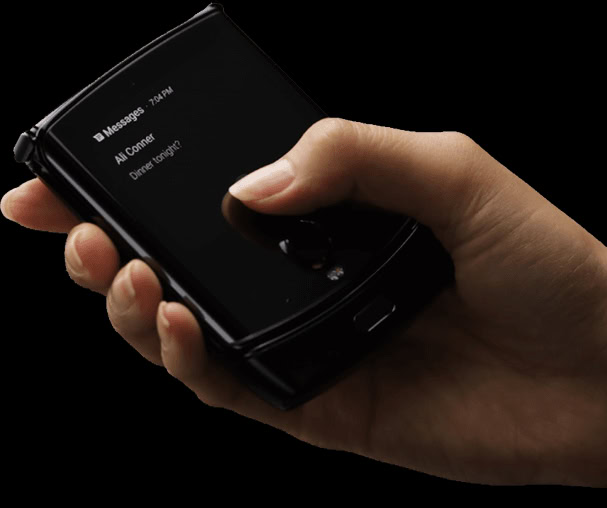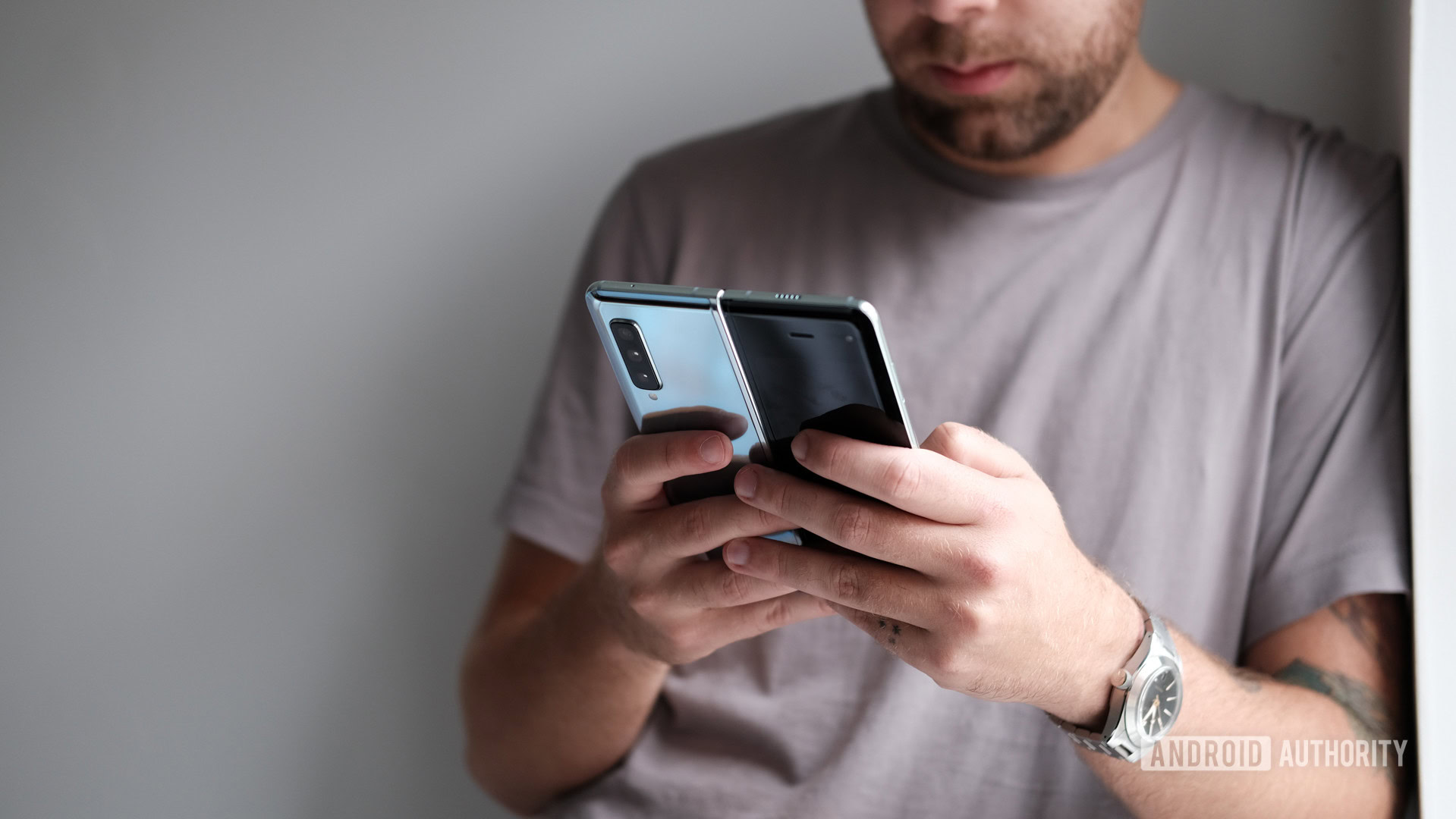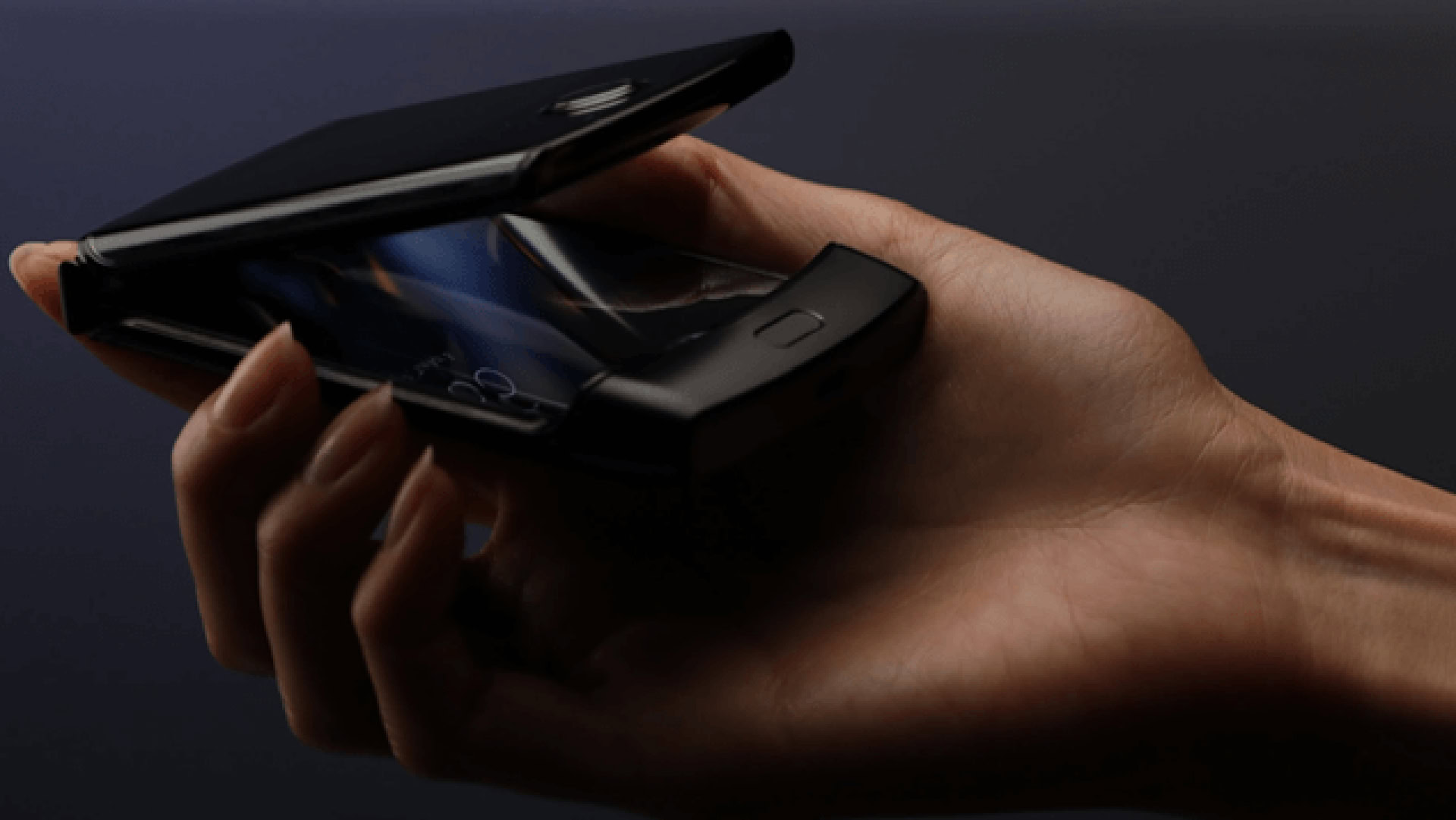Affiliate links on Android Authority may earn us a commission. Learn more.
With the upcoming Motorola Razr phone, foldable form factors are taking shape

I have a confession: I know foldables are the future, but I’m not totally sold on them yet. We’ve only seen two legitimate options come to market and they both have their fair share of issues. I’m not talking about broken displays, either — I’m talking about fundamental usability issues that will turn some people away because of the form factor alone.
Each foldable phone — the Samsung Galaxy Fold and HUAWEI Mate X — has a different approach to form factors and usability. Let’s start with the Galaxy Fold: It has a big 7.3-inch display on the inside with a 4.2:3 aspect ratio. It’s basically a square tablet when unfolded. This means users are pretty much required to use the phone with two hands if they don’t want to use that tiny 4.6-inch screen on the front. Herein lies our first usability issue. You only have two options: Use the tiny display on the front, or use the big ol’ display with two hands — there’s no in between.

The HUAWEI Mate X is similar, but different. It also has a big, square 8-inch display when unfolded, just like the Galaxy Fold. The Mate X folds outwards, though, sort of like a book in reverse. This way, the main smartphone-like display can still be used when the device is in the folded position. That’s a step in the right direction from a usability standpoint, but it also introduces our second problem: When the display is folded, the unused half of the display is exposed on the back. This makes it much more prone to scratching.
Before I get too far into the foldable bashing rabbit hole, there are some benefits to a big square display. Many reviewers claim that using the big display with two hands means you’re more productive. You have to be more deliberate with your actions when you’re forced to use the display with two hands.
Still, I’m not sold on either of these two form factors, and I think that’s because it’s hard to think of these devices as the next generation of our current smartphones. They’re just too different from the phones we all use today. With the Galaxy Fold, you have a big or a small display to choose from — nothing in between, and nothing similar to the phones we currently own. And although the Mate X has a more familiar smartphone-sized display when folded, it’s big — measuring 6.6 inches — and it’s chunky (it’s essentially two smartphones stacked on top of one another). That’s why I think Motorola’s upcoming foldable phone will be more appealing to more people.

The foldable Razr phone isn’t a book-like foldable — it’s more like a traditional flip phone than anything else. When folded, it has a square-ish design with a small display on the front, just like 2004’s Razr V3. Flip it open, and you’ll be presented with an extra-tall display that you’ll likely be able to use with one or two hands. Based on the leaks so far, it doesn’t appear to be nearly as big or bulky as the Fold or Mate X.
The new Razr phone seems more like an extension, or maybe the natural evolution of our current smartphones. It takes two familiar form factors — an old flip phone and a tall display — and combines them into one. It doesn’t seem like Motorola is trying to reinvent the wheel with this phone, and maybe that’s what foldables need to become successful. You probably won’t have to completely change the way you use your phone just to interact with the Razr. In my eyes, using it will be quite natural.
I think that’s also why the LG G8X is stirring up so much positive press. You can use the G8X like a normal smartphone whenever you want and conveniently add a second display when you need it. It also doesn’t add too much extra bulk. It’s familiar, and has just the right amount of adaptability and approachability.
I don't know about you, but completely changing the way I use my phone doesn't sound fun.
People want to use things that are similar to the things they already know. Going into a carrier store and upgrading to a big ol’ tablet-like phone such as the Galaxy Fold is a big ask. But getting someone to upgrade to a more familiar form factor like the Razr might make more sense for more people.
Personally, I think this is why flip phone-style foldables are going to catch on. In fact, we’re already starting to see that happen — Samsung just teased a flip phone foldable at its developer conference, suggesting that the Galaxy Fold form factor isn’t the only one Samsung has in store.
With foldables, we’re entering an era of experimentation. It’s exciting, and it’s making smartphones interesting again. As more form factors are released, we’re going to naturally figure out which ones work and which ones don’t. If I had to guess which form factors will stand the test of time, I’d put my money on the foldable Razr phone.
Next: Following the Galaxy Fold’s issues, the Surface Duo’s design is refreshing